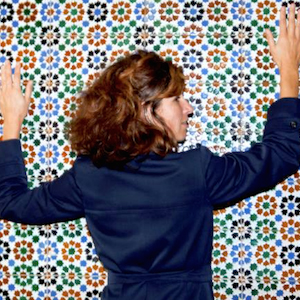When she won the competition to renovate the souks of Beirut in 1992, French born Annabel Karim Kassar fell in love with the chaotic, multi-layered, ancient city – more precisely with its historic buildings. Her souks project was part of rebuilding post-war Beirut. Since then she has done numerous projects throughout the city – from residential buildings over a nightclub and now the Ottoman building she opened to the Beirut Design Week public. In a city that was torn apart for 15 years by an abhorrent civil war, as the bullet holes in its facades still bear witness to, Annabel Karim Kassar tries to save what can be saved: "Today people want new buildings, a trend that had already started before the war, but of course the war only made it worse: nobody wants to be reminded of the bad times, everybody wants to overwrite that horrible past. While it is of course important to keep the link with the past”, declares the passionate architect. “In a healthy city, several layers of civilization should be visible, the past is as important as the present. There is no future without the past – we really need this connection in order to establish a healthy society. History, even when painful as in the case of Beirut, shouldn’t be hidden.”
During Beirut Design Week, the architect who has an office in Beirut as well as in London and Dubai opened her Ottoman mansion to the public, offering the crowd an informative exhibition explaining each step and preservation technique of the renovation process. She did so because she finds it important for people to realize the importance of heritage. “We have very good, skilled artisans here in Beirut, and many small companies who produce excellent work. I find it crucial to work with them, since they represent a living heritage. We have to preserve their crafts by using them. You know I think we should always realize that the real designers are these kinds of people: artisans and craftspeople who design objects and solutions for everyday life. I see them as our natural allies and colleagues. We designers and architects have to stop thinking we are the best – we have everything to learn from the craftspeople.”
 If we ask Annabel Karim Kassar whether she considers Beirut to be a creative hub, she enthuses: “I’ve always known it as a creative place, a crossroads of influences blessed with an open atmosphere that invites all kind of creatives to produce, exchange and collaborate. Not just in Lebanon, but in the entire Middle East region, Beirut is a kind of dynamic hub. People are eager here. I meet more architects and designers here than in London… They go out, they’re curious to see colleagues’ projects, they are connected with society, they are open to new developments. And so many events are organized here, it’s amazing. The city is still in a precarious situation – economically, as well as socially with so many Syrian war refugees. The dynamics of Beirut are quite different, but also the face of the city. In Beirut you’ll see an age-old archeological site next to a modernist building next to a huge gap between buildings caused by the war, all equally part of the urban landscape. This inspires me – going out in the streets of Beirut is just very exciting.
If we ask Annabel Karim Kassar whether she considers Beirut to be a creative hub, she enthuses: “I’ve always known it as a creative place, a crossroads of influences blessed with an open atmosphere that invites all kind of creatives to produce, exchange and collaborate. Not just in Lebanon, but in the entire Middle East region, Beirut is a kind of dynamic hub. People are eager here. I meet more architects and designers here than in London… They go out, they’re curious to see colleagues’ projects, they are connected with society, they are open to new developments. And so many events are organized here, it’s amazing. The city is still in a precarious situation – economically, as well as socially with so many Syrian war refugees. The dynamics of Beirut are quite different, but also the face of the city. In Beirut you’ll see an age-old archeological site next to a modernist building next to a huge gap between buildings caused by the war, all equally part of the urban landscape. This inspires me – going out in the streets of Beirut is just very exciting.



During Beirut Design Week, the architect who has an office in Beirut as well as in London and Dubai opened her Ottoman mansion to the public, offering the crowd an informative exhibition explaining each step and preservation technique of the renovation process. She did so because she finds it important for people to realize the importance of heritage. “We have very good, skilled artisans here in Beirut, and many small companies who produce excellent work. I find it crucial to work with them, since they represent a living heritage. We have to preserve their crafts by using them. You know I think we should always realize that the real designers are these kinds of people: artisans and craftspeople who design objects and solutions for everyday life. I see them as our natural allies and colleagues. We designers and architects have to stop thinking we are the best – we have everything to learn from the craftspeople.”










